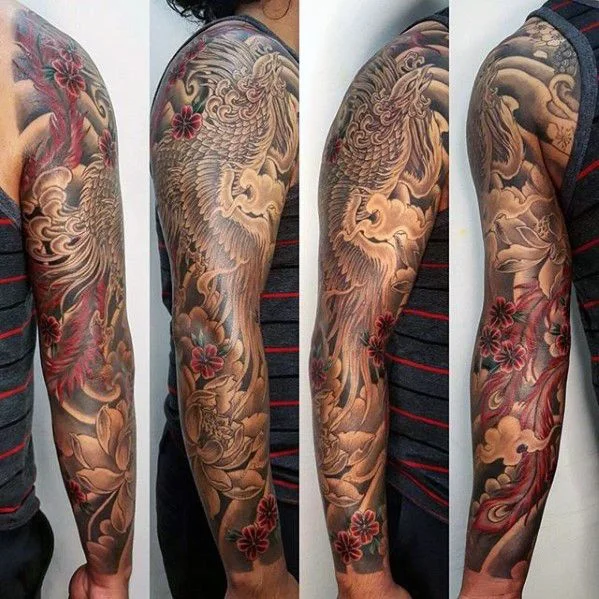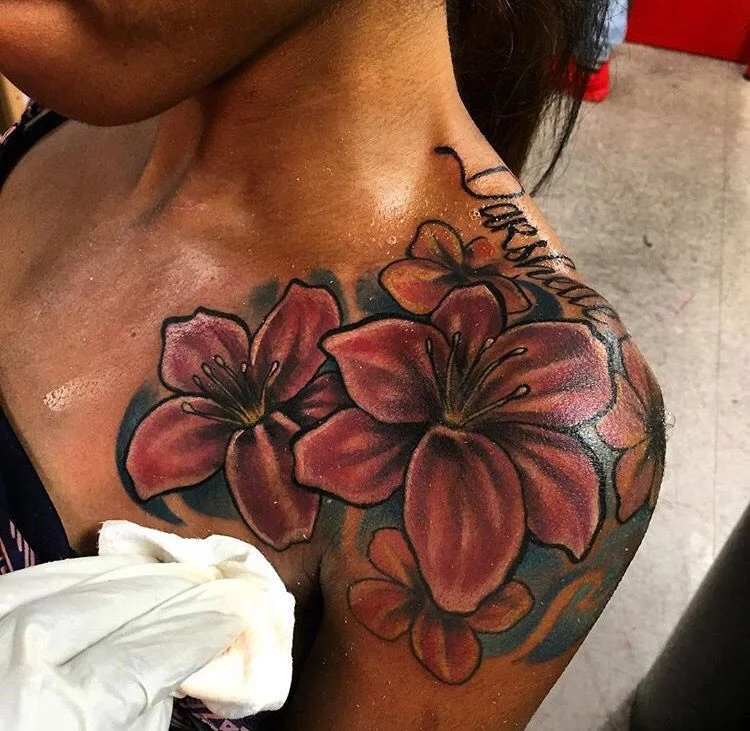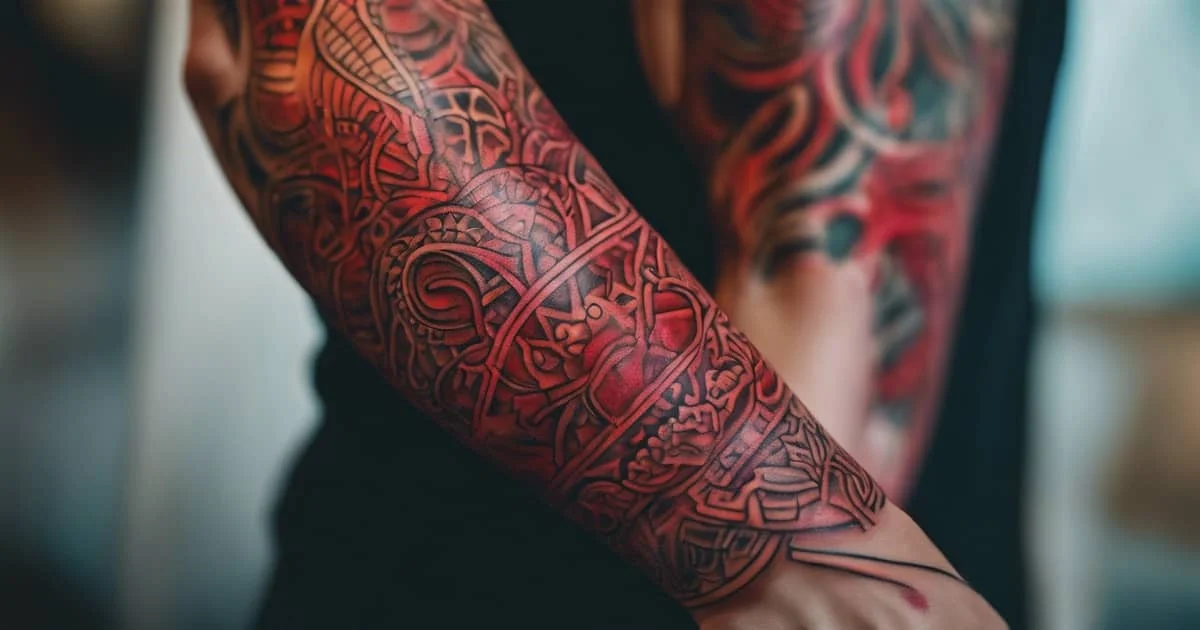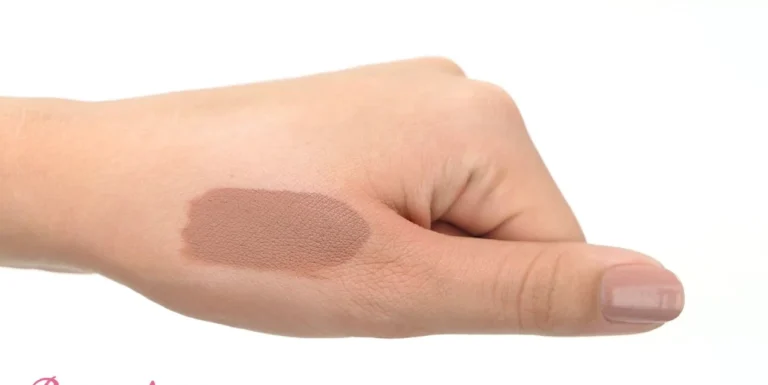Red Tattoo on Dark Skin: How to Choose the Perfect Design and Color?
Are you thinking of getting a tattoo on your dark skin? Do you want to make a statement with a bold and vibrant color? If so, you might want to consider a red tattoo.
Red tattoos are becoming more popular among tattoo enthusiasts, thanks to their unique and eye-catching appeal. Red ink can create stunning designs that stand out from the crowd, whether you want a subtle accent or a full-on masterpiece.
However, before scheduling your session, understanding vital aspects of red tattoos on dark skin is imperative. This article will delve into the historical context, symbolism, and significance behind red tattoos. Additionally, it will provide invaluable insights, guiding you in selecting the most fitting design and color that complements your unique skin tone. Accompanied by illustrations, we’ll showcase various red tattoos on dark skin to ignite your inspiration and spark creative ideas.
Getting to Know the Base: Dark Skin and Tattooing
Before we get into the nitty-gritty of red tattoos, let’s take a moment to understand the canvas they’re painted on – dark skin. Tattooing on darker skin tones has had its challenges in the past. The contrast between the ink and the skin often meant that traditional tattoo inks didn’t quite stand out as much as they did on lighter skin. They’d sometimes appear dull or faded, making the designs lose their sparkle. But, thanks to improvements in tattoo techniques and a greater appreciation for diversity in the industry, tattoo artists have become wizards at creating eye-catching pieces that really complement the rich tones of dark skin.
The History and Symbolism of Red Tattoos
Red tattoos carry a rich historical tapestry woven through diverse cultures, leaving an indelible mark throughout ancient times.
The color red, emblematic of life’s essence, passion, and vitality, holds a profound place in the art of tattooing. It signifies fire, courage, strength, and prowess, encapsulating an array of meanings dependent on the context and chosen design.
Across cultures, red tattoos portray varied symbolism. Some signify protection, healing, and fertility, while in other contexts, they embody themes of conflict, danger, and risk. These tattoos encapsulate emotions ranging from love, devotion, and romance to anger, aggression, and retribution.
A multitude of symbols grace red tattoos, each laden with its own significance:
- Flowers like roses, poppies, hibiscus, and lotus portray elegance, beauty, and femininity while embodying passion and desire.
- Animals such as dragons, snakes, tigers, and birds symbolize power, wisdom, and freedom, intertwined with danger and cunning.
- Geometric shapes, including hearts, stars, and various forms, symbolize love, hope, and faith, alongside expressions of creativity, equilibrium, and unity.
- Words, names, or quotes serve as embodiments of personal expression, identity, and inspiration, reflecting unwavering dedication, loyalty, and commitment.
The Importance of Skilled Artists: Expertise in Red Tattoos on Dark Skin
Mastering the art of tattooing on darker skin, particularly when using red ink, stands as a pivotal phase. The significance cannot be overstated; it requires a high level of skill and expertise. Notably, not all tattoo artists are adept at working with darker skin tones and red pigments. It’s imperative to have experience and a deep comprehension of how diverse inks interact with different skin tones. A proficient artist well-versed in handling red tattoos on darker skin possesses the ability to bring forth the true essence of the chosen design, ensuring it harmonizes flawlessly with the skin’s natural richness.
What are the tips and tricks to make red tattoos look amazing on dark skin?
If you have decided to get a red tattoo on your dark skin, you might be wondering how to choose the best design and color for your skin tone. Here are some tips and tricks to help you make the right decision:
- Do a patch test: Red ink is one of the most common causes of allergic reactions and infections in tattooing, as it contains ingredients that can irritate the skin, such as cadmium, mercury, and iron oxide. Some people may experience redness, swelling, itching, and scarring, or even more serious complications, such as skin cancer. To avoid these risks, it is recommended to do a patch test before getting a red tattoo by applying a small amount of red ink to a hidden area of your skin and waiting for 24 hours to see if you have any adverse reactions.
- Consider the placement and size of your tattoo: The placement and size of your tattoo can affect how well the red ink shows up on your dark skin. Generally, the darker your skin tone, the more contrast and intensity you need to make the red ink visible. Therefore, you might want to choose a larger and more detailed design and place it on an area of your body that has less pigmentation, such as your chest, back, arms, or legs. Avoid areas that have more pigmentation, such as your face, hands, or feet, as the red ink might not show up well or fade quickly.
- Choose the right shade of red: Not all reds are created equal, and some may suit your skin tone better than others. Generally, darker and warmer shades of red, such as burgundy, maroon, and crimson, work better on dark skin tones than lighter and cooler shades, such as coral, salmon, and cherry. You can also mix red with other colors, such as black, brown, or purple, to create more depth and contrast.
- Choose the right design: The design of your tattoo can also affect how the red ink shows up on your skin. Some designs may look better with red ink than others, depending on the size, shape, and style of the tattoo. For example, red ink may look better on simple and bold designs, such as geometric shapes, letters, or symbols, than on complex and detailed designs, such as portraits, landscapes, or flowers. You can also use red ink as an accent or highlight, rather than as the main color, to create more impact and interest.
Why Choose Red Ink for Your Tattoo?
Red ink tattoos are becoming more popular among tattoo enthusiasts, thanks to their unique and eye-catching appeal. Red ink can create stunning designs that stand out from the crowd, especially on dark skin. Red ink tattoos can also have different meanings and symbolism, depending on the design and the culture.
Some of the common meanings and symbolism of red ink tattoos are:
- Passion, love, romance, and desire
- Courage, strength, power, and bravery
- Blood, life, vitality, and energy
- Fire, heat, warmth, and light
- Danger, warning, aggression, and violence
- Rebellion, revolution, and change
- Beauty, elegance, and grace
Red ink tattoos can also represent different things in different cultures. For example, in Chinese culture, red is a lucky and auspicious color that symbolizes happiness, prosperity, and success. In Native American culture, red is a sacred color that represents the earth, life, and spirituality. In Hindu culture, red is a holy color that signifies purity, fertility, and devotion.
What to Consider When Choosing a Red Tattoo on Dark Skin?
While red ink tattoos can look amazing on dark skin, there are some factors that you need to consider before getting one. Here are some of them:
- The quality of the ink: Not all red ink is made with the same ingredients. Some red ink may contain substances that can cause allergic reactions, infections, or even cancer. Some of these substances are cadmium, mercury, lead, and nickel. Therefore, it is important to choose a high-quality red ink that is safe and suitable for your skin. You can also ask your tattoo artist about the ingredients and the possible side effects of the red ink they use.
- The shade and intensity of the red ink: Red ink comes in different shades and intensities, from bright and vibrant to dark and muted. The shade and intensity of the red ink can affect how it looks on your skin tone. Generally, darker shades of red ink look better on darker skin tones, as they create more contrast and visibility. Brighter shades of red ink may look more faded or dull on darker skin tones as they blend in with the skin’s pigmentation. However, this also depends on the design and placement of the tattoo. You can also mix and match different shades of red ink to create a more dynamic and interesting effect.
- The design and the size of the tattoo: The design and size of the tattoo can also influence how the red ink looks on your skin. Some designs may look better with red ink than others, depending on the style, the theme, and the meaning of the tattoo. For example, red ink can work well with designs that are related to fire, blood, roses, hearts, dragons, or phoenixes. However, red ink may not be the best choice for designs that are related to water, ice, flowers, stars, or butterflies. The size of the tattoo can also affect how the red ink looks on your skin. Larger tattoos may require more red ink, which can make them more noticeable and striking. Smaller tattoos may require less red ink, which can make them more subtle and delicate.
How to take care of your red tattoo on dark skin?
After getting your red tattoo on dark skin, you need to take good care of it to ensure its healing and longevity. Here are some tips on how to care for your red tattoo on dark skin:
1. Follow the aftercare instructions given by your tattoo artist
They may vary depending on the type of red ink, the design, and the location of the tattoo. However, some general aftercare instructions are to keep the tattoo clean, dry, and moisturized, to avoid direct sunlight, swimming, and scratching, and to apply a thin layer of antibiotic ointment or lotion as needed.
2. Monitor your tattoo for any signs of infection or allergic reaction
Some common signs of infection are redness, swelling, pain, pus, fever, or a foul odor. Some common signs of an allergic reaction are itching, burning, rash, hives, or blisters. If you notice any of these signs, contact your tattoo artist or a doctor immediately.
3. Protect your tattoo from fading and discoloration
Red ink tattoos can fade and discolor over time, especially on dark skin. This can be due to various factors, such as exposure to sunlight, aging, skin type, and lifestyle. To prevent or minimize fading and discoloration, you can do the following:
4. Use sunscreen or cover your tattoo when going outside
Sunlight can damage the red ink and make it fade faster. You can use a sunscreen with at least SPF 30 or wear clothing that covers your tattoo when going outside.
5. Moisturize your tattoo regularly
Moisturizing your tattoo can help keep it hydrated and healthy. You can use a moisturizer that is fragrance-free and hypoallergenic and apply it gently to your tattoo once or twice a day.
6. Avoid smoking and drinking alcohol
Smoking and drinking alcohol can affect your blood circulation and skin health, which can make your tattoo fade faster. You can quit smoking and limit your alcohol intake to preserve your tattoo’s color and quality.
7. Eat a balanced diet and drink plenty of water
Eating a balanced diet and drinking plenty of water can help nourish your skin and boost your immune system, which can help your tattoo heal faster and last longer. You can eat foods that are rich in vitamins, minerals, antioxidants, and proteins, and drink at least eight glasses of water a day.
What are the challenges and risks of red tattoos on dark skin?
Red tattoos are one of the most challenging and risky colors to get on dark skin tones. There are several reasons for this, such as:
- Red ink is not very opaque, meaning that it does not cover the underlying skin color very well. This means that red ink may look more brown or purple on dark skin tones, depending on the shade of red and the amount of melanin in the skin.
- Red ink is more prone to fading than other colors, especially when exposed to sunlight. This means that red tattoos may lose their brightness and vibrancy over time and require more touch-ups to maintain their appearance.
- Red ink is more likely to cause allergic reactions than other colors, especially for people with sensitive skin. This is because red ink contains a pigment called cadmium, which can cause inflammation, itching, swelling, and scarring. Some people may also develop granulomas, which are small bumps that form around the tattoo ink.
Which Shade of Red Works Best for Tattoos on Dark Skin?
When you’re picking a red tattoo for dark skin, it’s important to understand undertones. Dark skin has a wide range of shades, from warm caramel to deep ebony. If your skin has reddish or golden undertones, go for warmer reds like scarlet or crimson. These colors blend well with warm skin tones. If your skin leans more towards blue or purple undertones, cooler reds like burgundy or maroon are great options. Whether you’re thinking of a delicate floral design, a meaningful symbol, or an abstract masterpiece, red tattoos have a special allure beyond just their color. They become stories etched onto your skin, telling the world about your journey and identity. So, take your time in choosing the perfect red ink, and let your tattoo proudly share your story!
Some Examples of Red Tattoo on Dark Skin
To give you some inspiration and ideas, here are some examples of red tattoo on dark skin that you can check out:
1. Red ink butterfly tattoo: This tattoo features three red ink butterflies on the arm, creating a simple and elegant effect.
2. Red ink dragon tattoo: This tattoo features a red ink dragon on the chest, creating a powerful and majestic effect.
3. Red ink phoenix tattoo: This tattoo features a red ink phoenix on the back, creating a stunning and symbolic effect.
4. Red ink heart tattoo: This tattoo features a red ink heart on the wrist, creating a cute and romantic effect.
5. Red ink hibiscus tattoo: This tattoo features a red ink hibiscus on the shoulder, creating a beautiful and graceful effect.
Conclusion
Red tattoo on dark skin are possible and beautiful, but they require more care and attention than other colors. You need to choose the right shade of red, the right design, the right placement, and the right artist for your skin tone. You also need to take good care of your tattoo after you get it and follow the aftercare instructions given by your artist. By doing so, you can enjoy your red tattoo for a long time and show it off with pride and confidence.
Frequently Asked Questions (FAQs)
Q: Can I get a red tattoo on my dark skin?
A: Absolutely! Red tattoos can look stunning on dark skin. The key lies in choosing the right shade of red and working with a skilled tattoo artist who understands the nuances of dark skin.
Q: Do red tattoos fade more quickly on dark skin?
A: While all tattoos fade over time, red tattoos on dark skin may appear more vibrant initially due to the contrast with the skin. With proper care and maintenance, including sun protection and regular touch-ups, you can help preserve the intensity of your red tattoo for years to come.
Q: Are there specific aftercare instructions for red tattoos on dark skin?
A: While the basic principles of tattoo aftercare apply to all skin tones, there may be additional considerations for red tattoos on dark skin. Your tattoo artist can provide personalized aftercare instructions based on your skin type and the specific characteristics of your tattoo to ensure optimal healing and long-term vibrancy.
Q: How can I prevent my red tattoo from fading on dark skin?
A: To minimize fading, it’s essential to protect your tattoo from sun exposure by applying sunscreen regularly and avoiding prolonged sun exposure, especially during the healing process. Additionally, staying hydrated and moisturizing your skin can help maintain the vibrancy of your tattoo over time.
Q: Are there any risks associated with getting a red tattoo on dark skin?
A: As with any tattoo, there are potential risks, including infection, allergic reactions, and uneven healing. However, choosing a reputable tattoo artist and following proper aftercare guidelines can help minimize these risks. If you have specific concerns or medical conditions, it’s essential to discuss them with your tattoo artist before getting inked.








